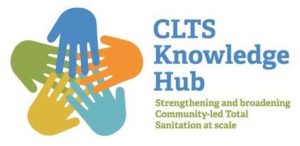USAID CLA Case Analysis Deep Dive: Zambia’s Community-Led Total Sanitation Program, July 2019. 
This case study focuses on Akros’ CLA-aligned approach to improving sanitation in Zambia, conducted as part of the Zambian Sanitation and Health Program (ZSHP) in partnership with UNICEF and funded by DFID from 2012 to 2018. Akros’ involvement began in 2014 with its introduction of a Mobile-to-Web (M2W) application to the CLTS process in a small number of pilot districts.
Upon successful completion of these pilots, Akros scaled the M2W application to 68 rural districts. Akros eventually incorporated into its intervention close collaboration with traditional leaders. As part of USAID’s efforts to build the evidence base for CLA and one of two Deep Dive case studies (the other concerns Global Communities’ response efforts to the Ebola outbreak in Liberia), this analysis seeks to assess evidence about whether intentional, systematic, and resourced approaches to CLA made plausible contributions to development outcomes in this case
Conclusions: This deep dive into CLA integration, implementation, and impact in CLTS efforts in Zambia yields a number of insights into the specific contributions CLA made to the response. It suggests that strategic collaborations with government officials, traditional leaders, and community members led to greater feelings of local ownership, self-reliance, and in many cases, effective behavior change.
An important dimension of this shift was rooted in CLA’s focus on social inclusion and facilitating diverse, culture-specific adaptations. Enabled by donor flexibility, and strengthened by a broad range of leadership support and participation, CLA approaches in this case incorporated innovative digital monitoring using the M2W app that led to better quality data and speedier feedback loops.
Chiefs/chieftainesses and headmen/women were also involved in ways that supported development outcomes, thereby demonstrating how traditional leaders can be constructive agents of change rather than anachronistic obstacles to development.
This case study utilizes and adapts innovative methods for assessing the contribution of CLA to intervention outcomes through process tracing and contribution analysis. Drawing on numerous sources of evidence, the study provides detailed descriptions of how CLA was integrated into program activities, which may inform future program design and implementation of CLA approaches for USAID staff, implementing partners, and other development practitioners.






